
Neos
Characteristics
Programming language:
Initial release:
Open Source as of:
License:
Current major release:
Registered users:
Core contributors:
Available languages:
The development of Neos started in 2006, originally planned to be the successor to TYPO3 CMS. Since 2015, Neos followed a different architectural approach and the project got independent as a completely new system.
Unlike other PHP-based open source content management systems, Neos is freed from classical database structures and follows a content repository pattern (known in the Java-world as the JSR 238 specification). This concept allows the system to be very easy and fast to extend without having to change database tables. New content elements and page types can be created without the need to write even one line of PHP – just by adding slim YAML configuration files.
Because of its consistent use of Doctrine for database abstraction, Neos is able to run using all Doctrine-supported databases. Therefore it is very easy to integrate into existing IT architectures of companies.
Today, more and more companies are using Neos for marketing sites as well as large enterprise applications and e-commerce. The system delivers high performance and flexibility. Editors like the seamless integration of inline-editing for the content, which allows them to edit text and images right in the frontend of the website.
Neos is used by customers from a wide range of industries, including 1&1 hosting company, Römerturm paper manufacturer, H-Hotels AG, the cities of Dortmund and Bad Tölz and many other small and large enterprises, cities and communities.
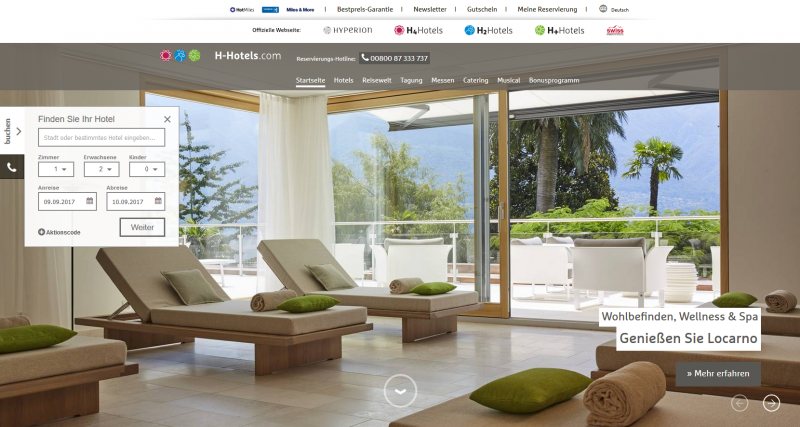
Features
Inline-editing
Right from the start, Neos’ goal has been to make it as easy as possible for editors to add and publish their content. Neos features complete inline-editing: changes and additions can be made directly in the website’s design – for editing experience that offers true WYSIWYG.
Neos also offers different views of the content, for example a „writer mode“, „print mode“ and more to not being distracted while working on an article. Depending on the configuration, Neos also offers possibilities to preview content as shown in Google search results or in a mobile viewport to facilitate optimization for all channels.
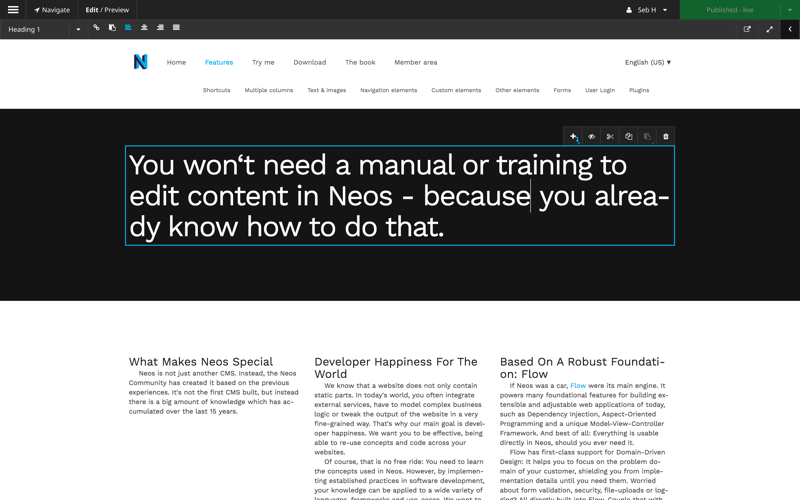
Content dimensions
Another outstanding and differentiating feature is the concept of „content dimensions“. This freely configurable abstraction of multilingualism allows the creation of as many versions of content as desired – for example page languages or content for certain audiences or regions.
With content dimensions, editors can also create special adapted versions of a landing page for Google AdWords campaigns or marketing promotions.
Workspaces
Everyday work of editors include reviewing and reworking content before publishing to the live website. Some other CMS solve this problem with a physical separation between an editing and a production system. Neos pursues a different approach: “workspaces”.
Each member of the team gets their own private workspace in which changes are only visible to themselves until they decide to publish them.
They can then either publish directly to the live website or into a dedicated review workspace, where content can be reviewed by the editor in chief and be published to live after approval or further editing. Lots of advanced release workflows can be realized using workspaces.
As editorial work on large websites and applications is often teamwork, Neos also offers the ability to work in shared team workspaces.
Multi-site and multi-language
Even though software and architecture are very different from TYPO3 CMS, some concepts have been taken over from the shared history.
The system is able to serve many websites and applications in one instance (multi-site) and display content of its pages in several languages (multi-language) out of the box.
There is no limit in the number of languages of sites that can be created with Neos. The user interface itself is currently available in 14 languages.
Cloud-ready
Being a relatively young CMS, the usage of cloud infrastructure has been part of Neos’ architecture right from the beginning. For instance, the media management allows editors to upload assets like images, documents or videos to a cloud storage or CDN provider without leaving the Neos backend. All centrally stored, categorized or tagged assets can then be used on pages from that storage directly – completely transparent to the editor. The Neos website itself is hosted on Google‘s Kubernetes within the Google cloud services.
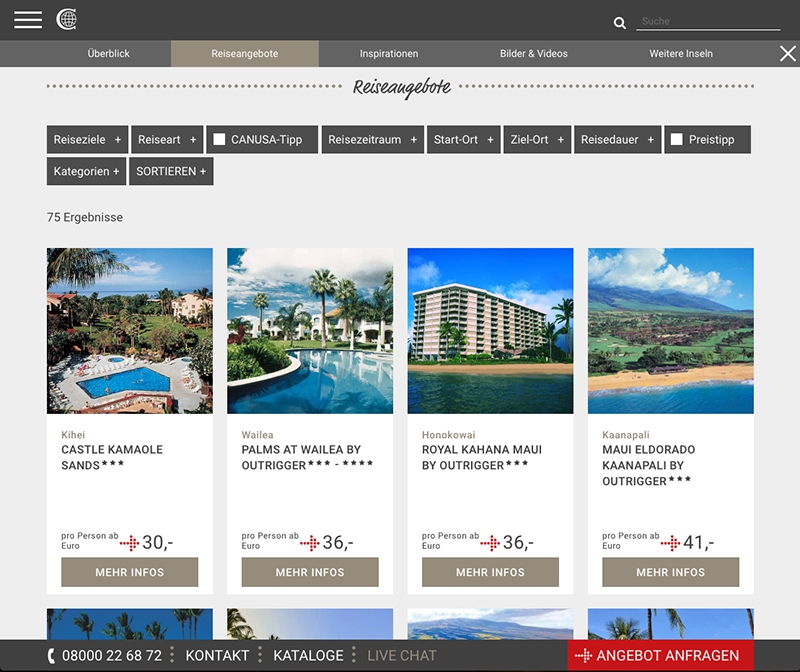
Extendability
Neos uses Composer as a package manager. The system can easily be extended with almost every library from packagist or one of the many Neos or Flow packages from the Neos website.
Those packages include the integration of IBM Watson (artificial intelligence), which can analyze the tone of texts, extended search features using Elasticsearch, SEO packages and Google Analytics.
The last one can be fully integrated into the Neos user interface to show analytics data directly while editing pages in the Neos backend. Currently, there are over 300 native extensions for the Neos CMS.
Operations
Neos provides developers and integrators with a comprehensive command-line interface (CLI) for convenient installation of Neos, importing and exporting site content, creating backups, performing database migrations or adding and removing users.
Deployments and operations can be completely automated (Continous Integration) by using Composer or CI/CD-tools.
The CLI is extendable with custom commands to accomodate project-specific tasks and features like importing data from specific sources.
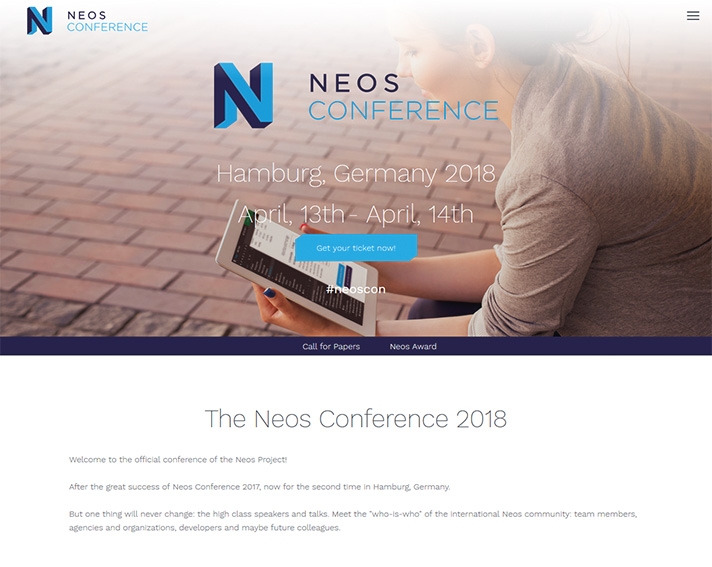
Community
Neos is enjoying increasing popularity and thus the community is growing, too. The Neos website features many ways to get in contact with the team and contribute to the project.
The main event is the annual Neos Conference where both technical and business topics are covered and websites and applications using Neos are presented. Regular sprint meetings on different topics offer the possibility to contribute hands-on to the Neos project. These sprints provide the perfect opportunity for beginners to get to know the core team and start contributing to Neos. Those interested in Neos but yet hesitating to take part are invited to attend „Meet Neos“ events at which the system is presented from editors’ and business perspectives. Case studies are often shown to provide a realistic impression of Neos’ capabilities.
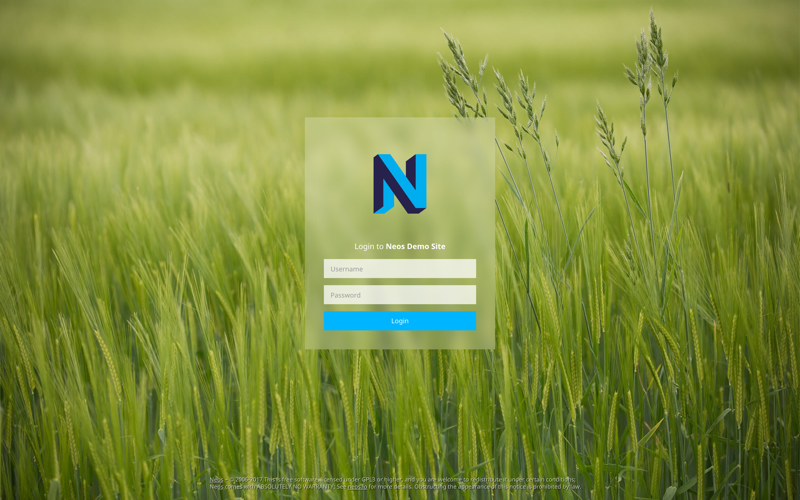
Vision
At the moment, the Neos community is working on many innovative features like the integration of machine learning, RDF semantics or CQRS and event sourcing. By integrating these patterns into the system, Neos will be getting even more interesting. In the future, revision-proof systems (like applications and websites of banks, insurance companies and public authorities) will be possible.
The Neos user interface is currently rewritten in React to enormously speed up the backend and increase the flexibility of content editing supporting custom views and panels.
